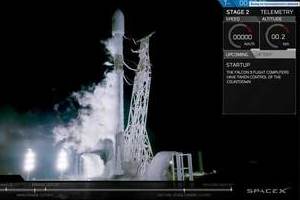SpaceX successfully launches Falcon 9 carrying Starlink demo satellites
SpaceX has successfully launched a Falcon 9 from SLC-4 at Vandenberg Air Force Base today, its first launch since its successful Falcon Heavy test earlier this month.
 The launch took off early Wednesday morning, after being rescheduled a couple of times from an initial target of this past weekend.
The launch took off early Wednesday morning, after being rescheduled a couple of times from an initial target of this past weekend.
The launch was primarily designed to bring the PAZ satellite to orbit (which was deployed as planned into a low Earth, sun-synchronous polar orbit), a satellite for a Spanish customer that’s designed to provide geocommunications and radar imaging for both government and private commercial customers. This launch had a secondary purpose, however, and one that might ultimately be more important to SpaceX’s long-term goals. SpaceX packed two demonstration micro satellites for its planned internet broadband service (which Elon Musk confided via tweet it will call ‘Starlink’). These will perform tests required before it’s certified to operate the service, which it hopes to use to generate revenue by signing up subscribers to its internet service, which will hopefully be globe-spanning once complete.
We will also see SpaceX attempt to recover the fairing used on this mission, using a new barge designed for the purpose called ‘Mr. Steven.’ The vessel is basically a large landing platform with a net strung across its surface, which is intended to capture the fairing as it returns to Earth gently, assisted by special parachutes. The fairing, which is the two-part ‘shield’ that protects the rocket’s cargo atop the Falcon 9, is a part that could save SpaceX as much as $6 million per launch if it’s able to be consistently reused.
We’ll update this post when we find out more about that aspect of today’s launch.
SpaceX did not attempt to recover the first stage booster used during today’s launch, which was a flight proven Falcon 9 first stage used during a mission last August.
Axarhöfði 14,
110 Reykjavik, Iceland














